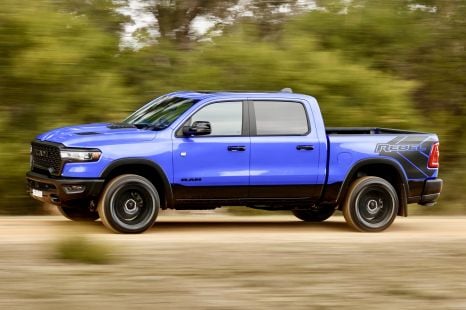

Max Davies
2026 Ram 1500 Rebel review
5 Days Ago
The Civic RS has numerous talents, but it's let down by an uninspiring drivetrain that almost spoils an otherwise fun drive experience.
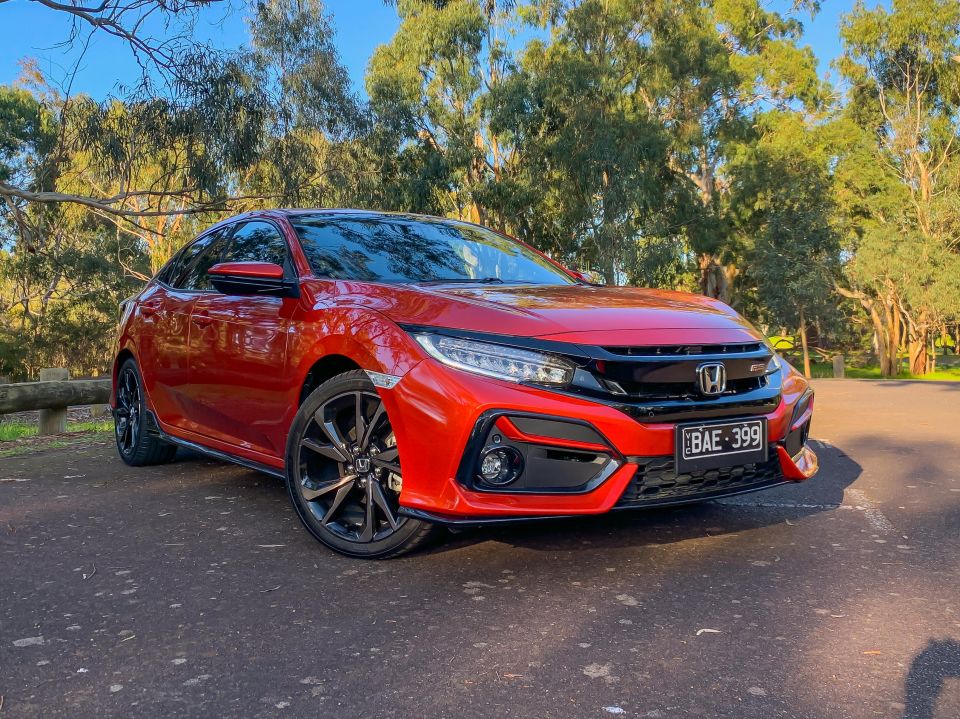


Marketplace Editor
New from
$22,390
excl. on-roads

Marketplace Editor
New from
$22,390
excl. on-roads


Marketplace Editor
New from
$22,390
excl. on-roads

Marketplace Editor
New from
$22,390
excl. on-roads
Quickly see how this car stacks up against its competition. Select any benchmark to see more details.
Where expert car reviews meet expert car buying – CarExpert gives you trusted advice, personalised service and real savings on your next new car.
These days you’ll see plenty of vehicles dressed up in ‘activewear’ or ‘athleisure wear’, normally with badging ending in ‘Line’.
Volkswagen has R-Line, Ford has ST-Line, Renault had GT-Line now RS-Line, BMW has M Sport and Mercedes-Benz has AMG Line.

It’s a way of getting a more sporting look and feel without necessarily adding any muscle in the mechanicals, perhaps with the exception of firmer suspension and low-profile tyres.
The Honda Civic RS is just like those models, don’t let the badge fool you. When you hear ‘RS’ you might think of the all-paw Ford Focus RS hot hatch or the bahn-storming RS models from Audi.
Honda’s not-so-small hatchback and sedan haven’t quite been enjoying the success they had at launch, now outsold by the likes of the Toyota Corolla and Hyundai i30 by three-to-one and two-to-one respectively, but is the latest Civic RS hatchback worthy of ‘warm hatch’ consideration? Time to find out.
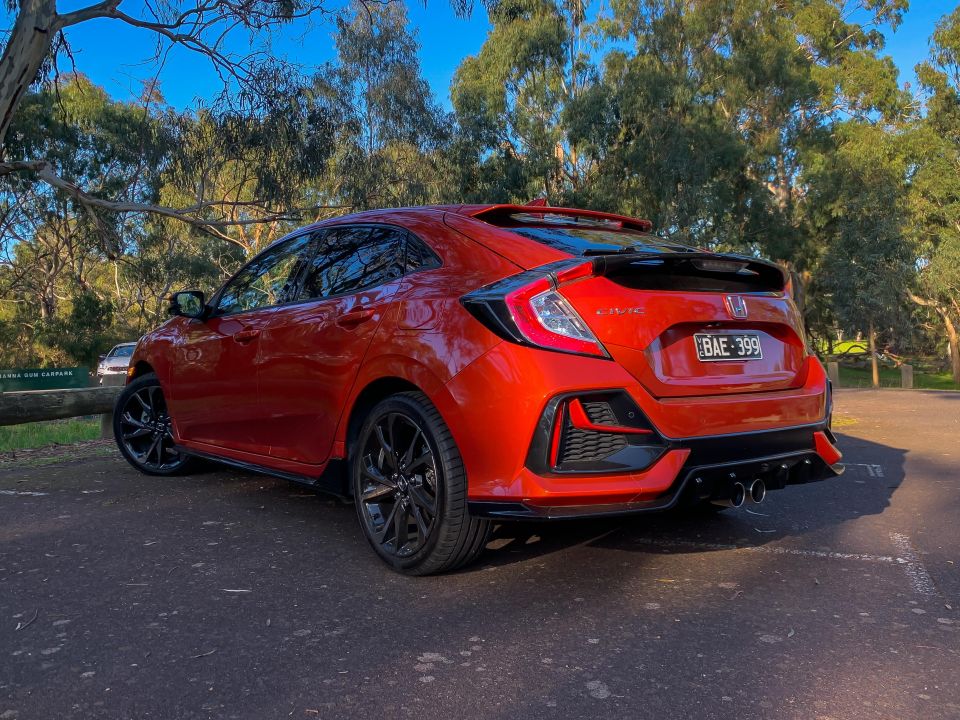
Starting at $33,540 before on-road costs, the CVT-only RS hatchback isn’t exactly ‘cheap’. In fact, it’s getting towards the pointy end of the small car segment competing with mid- to high-spec versions of rival nameplates.
Key competitors include the likes of the Ford Focus ST-Line hatch (from $28,990) and Volkswagen Golf 110TSI R-Line (from $36,990), as well as the Kia Cerato GT (from $33,490), and Hyundai Elantra Sport Premium (from $32,060).
The wonderful Phoenix Orange metallic paint you see here is a no-cost option, as are all other premium paint finishes.
Honda doesn’t offer any cost options for the Honda Civic RS – so the only extra spending you’ll have to do will be on-road costs and any accessories you want with your vehicle.
The RS sits one down from top spot in the standard Civic hatch line-up, occupied by the VTi-LX at $34,090 plus on-road costs. At the very top of the range is the full-fat hi-po Civic Type R hot hatch, priced from $51,990.
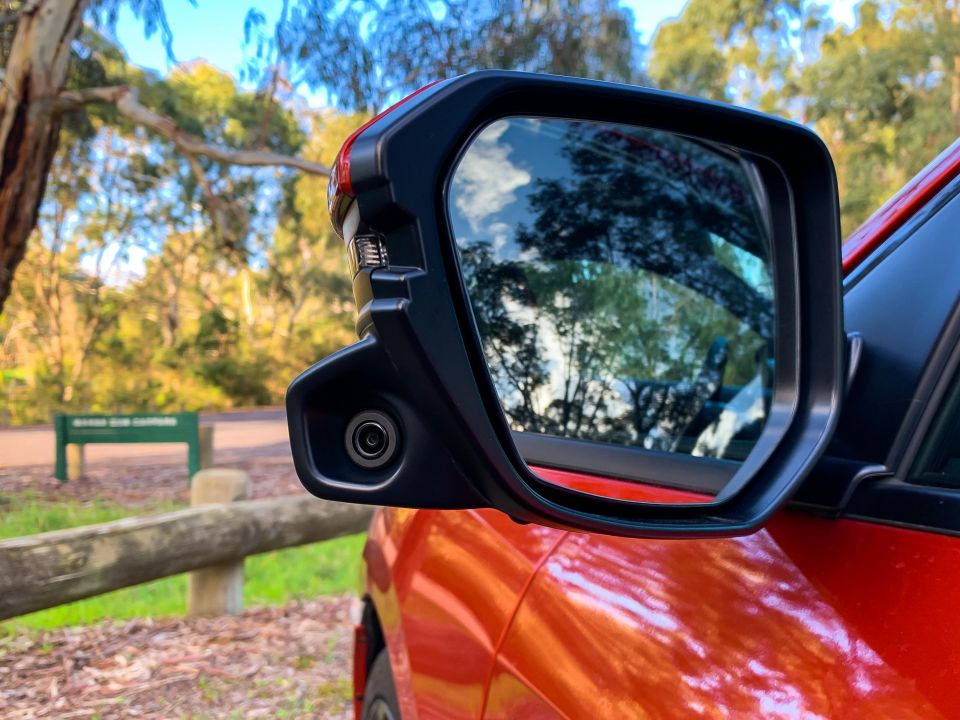
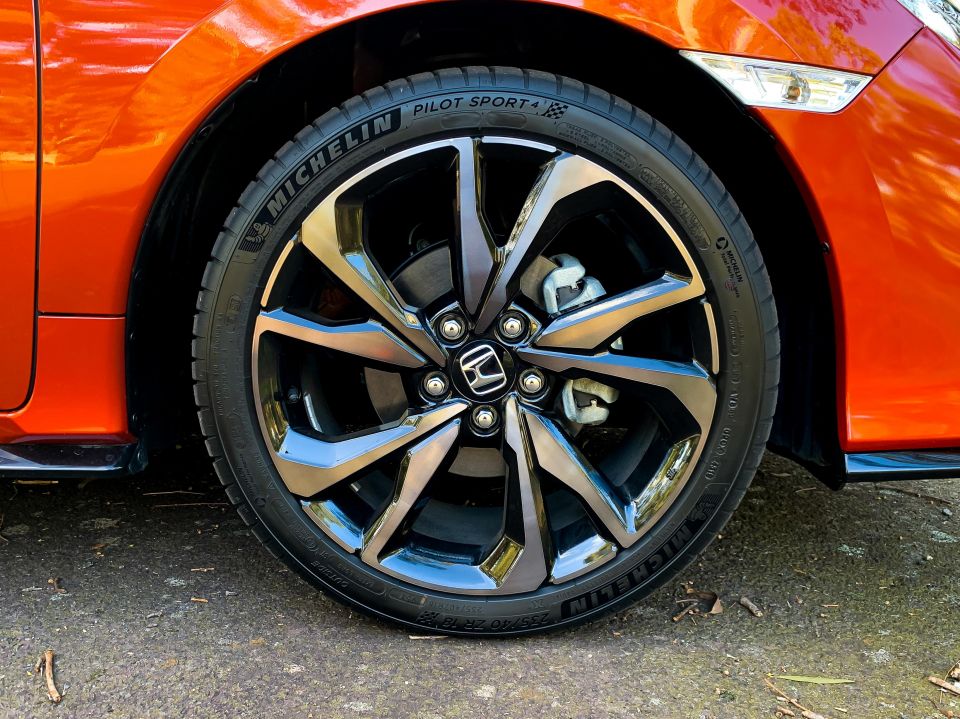
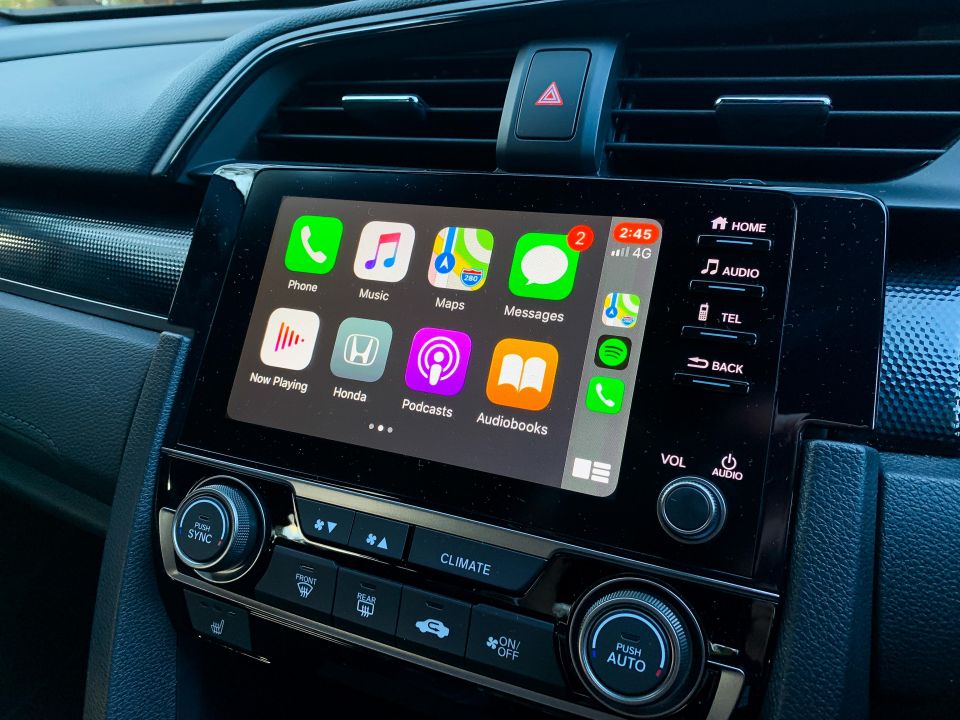
Buy your new car without the stress. It's fast, simple and completely free.

Great service from Travis and team, second time I have used this business would not hesitate to recommend them to anyone
Craig C.
Purchased a Ford Ranger in Sunshine Coast, QLD
CarExpert helped Craig save $7,224 on his Ford Ranger, now let us save you on your next new car.
Get your BEST priceKey highlights for the Civic RS include 18-inch alloy wheels wrapped in 235/40 Michelin Pilot Sport 4 tyres, auto-levelling LED headlights with auto high-beam, LED fog lights, automatic wipers, and leather-appointed seat trim with red stitching.
There’s also heated front seats, red stitching for the leather steering wheel, drilled alloy sports pedals, eight-way power driver’s seat adjustment, dual-zone climate control, DAB radio, paddle shifters, and a 452W premium audio system with 12 speakers including a subwoofer.
That’s atop features carried over from lower grades, including the Honda Sensing driver assistance suite (AEB, adaptive cruise with stop&go, lane keep assist, and aforementioned high-beam assist), dusk-sensing headlights, electric folding side mirrors, keyless entry and start, the LaneWatch passenger-side blind-spot monitor camera, LED daytime running lights, front and rear parking sensors, privacy glass, and a 7.0-inch touchscreen with Apple CarPlay and Android Auto.
It’s fairly well equipped for the price and segment, though if you want stuff like an electric sunroof, auto-dimming rear-view mirror, auto up/down windows all round, and satellite navigation, you’ll need to get the more luxury-focused Honda Civic VTi-LX which is around $500 more at $34,090 plus on-roads.
Opting for the RS hatch over the sedan also gets you a central twin exhaust system, which is rather sporty.

The Honda Civic range (bar the Type R) wears a five-star ANCAP safety rating with 2017 date stamp.
It scored 34.68 out of 37 in tests conducted locally, though being based on older protocols the effectiveness of the AEB system, for example, isn’t included.
The Civic managed 14.75 out of 16 for the frontal offset test and 14.93 out of 16 for the side impact test. It also scored 2 out of 2 for the pole test, while protection for whiplash and pedestrians was also rated ‘Good’.
As a point of reference, the European version of the Honda Civic – built in the UK – wears a 2017-stamped five-star Euro NCAP safety rating, with scores of 92 per cent in adult occupant protection, 75 per cent for child occupants, 75 per cent for pedestrians, and 88 per cent for safety assist.
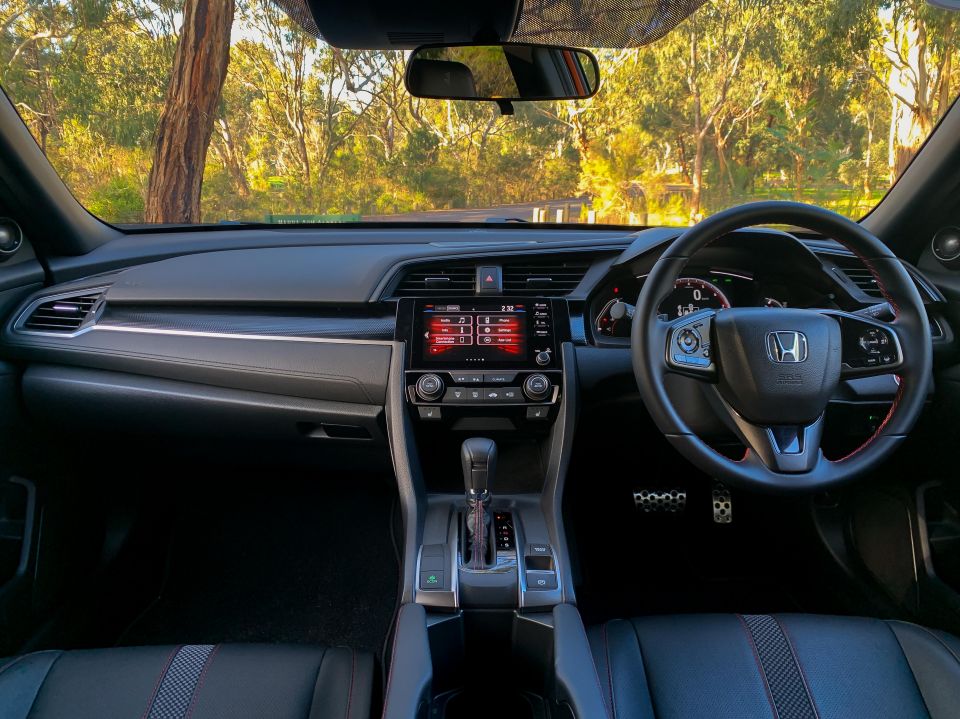
Inoffensive. Not much has changed since the Civic landed a few years ago, and the overall design has aged fairly well.
Overall perception of quality is pretty good too, with a decent spread of soft-touch materials at the high- and mid-tiers of the cabin, while everything feels well screwed together.
I think one of the major drawbacks is the overall look and feel of the displays – both the 7.0-inch touchscreen and the LCD display in the instrument cluster.
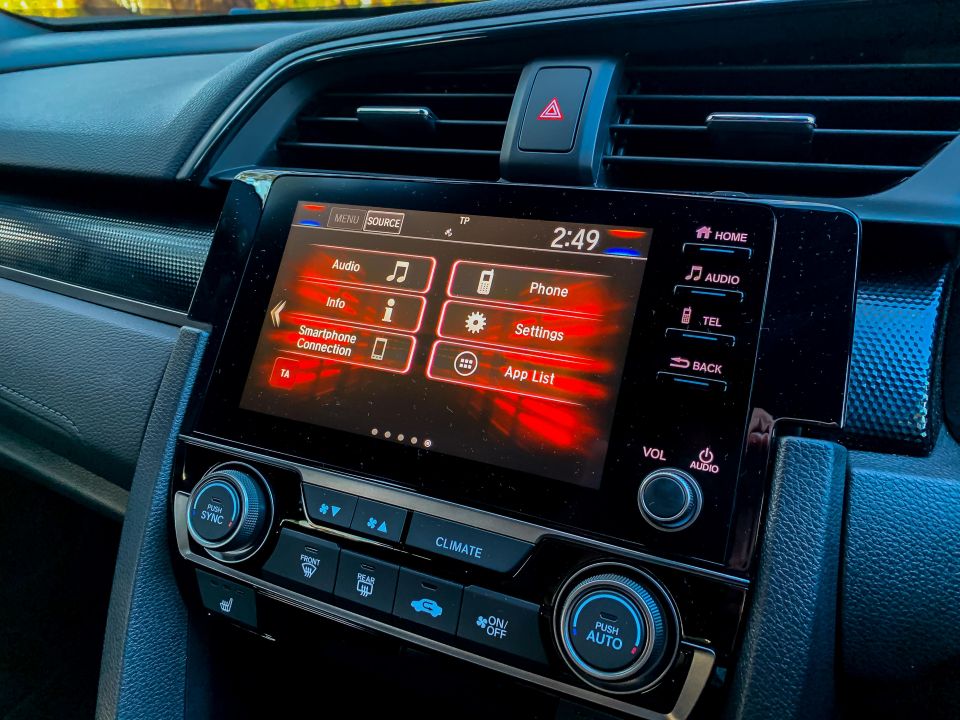
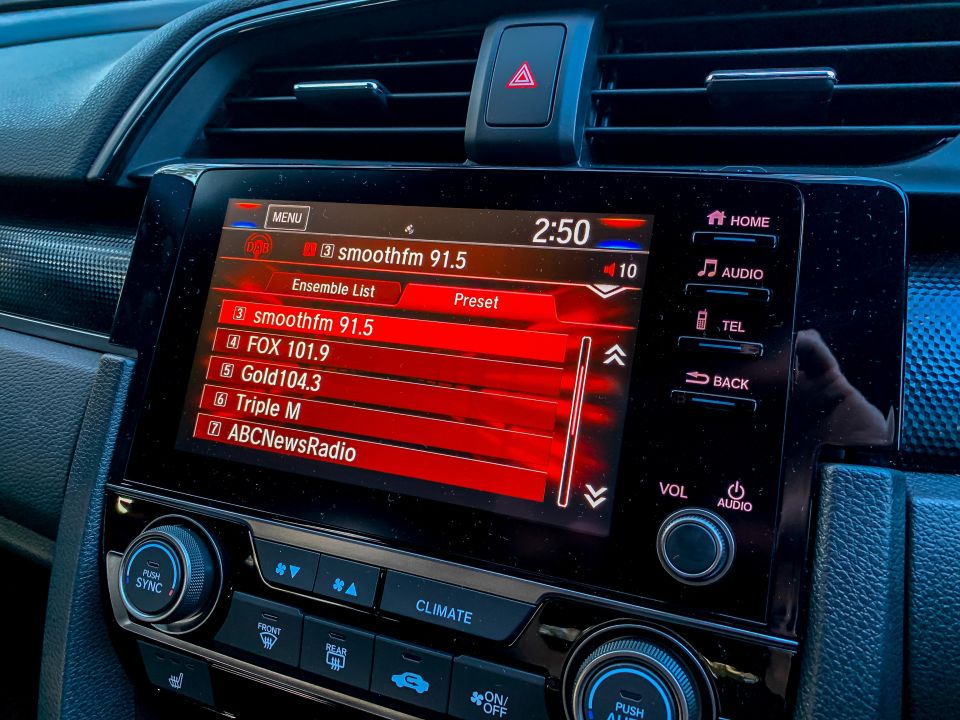
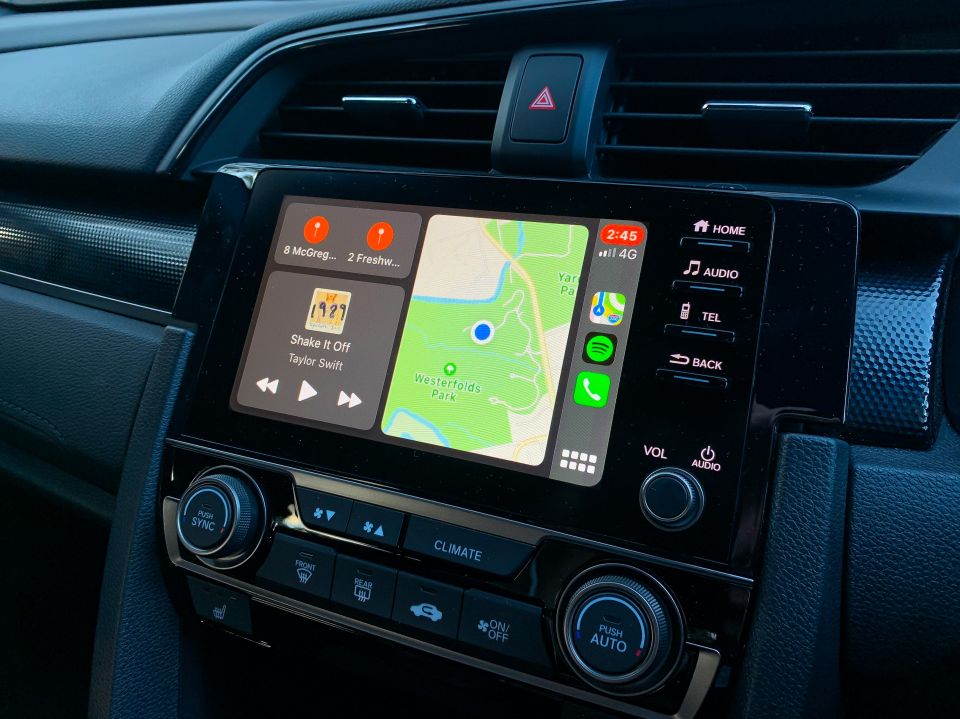
The graphics are dated, the response and refresh rate doesn’t feel overly smooth or quick, and it just detracts from the experience especially given how good rival systems are – namely in the Volkswagen Golf and Mazda 3.
Having Apple CarPlay and Android Auto is good, but you’ll probably get annoyed that the screen changes every time you indicate left and activate the LaneWatch camera.
Speaking of LaneWatch, the idea is conceptually good, and it no longer cuts out Siri voice commands like it used to, but it’s just not implemented that well – I’d stick to a normal blind-spot monitor light in both mirrors, not just the passenger side.
It’s also odd that Honda reserves inbuilt navigation for the VTi-LX when every Civic variant features the same touchscreen, and it’s increasingly common amongst most rivals to have native GPS as standard especially at this end of the segment. The 12-speaker sound system, meanwhile, is a point of difference in the segment and offers crisp, clear sound with plenty of bass for your road trip bangers.
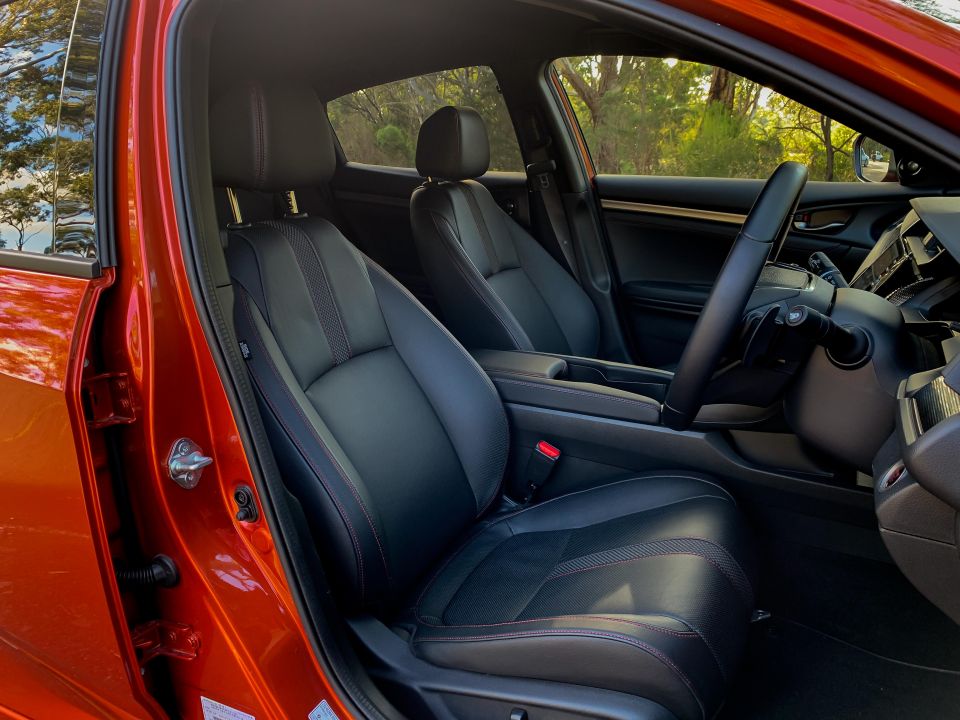
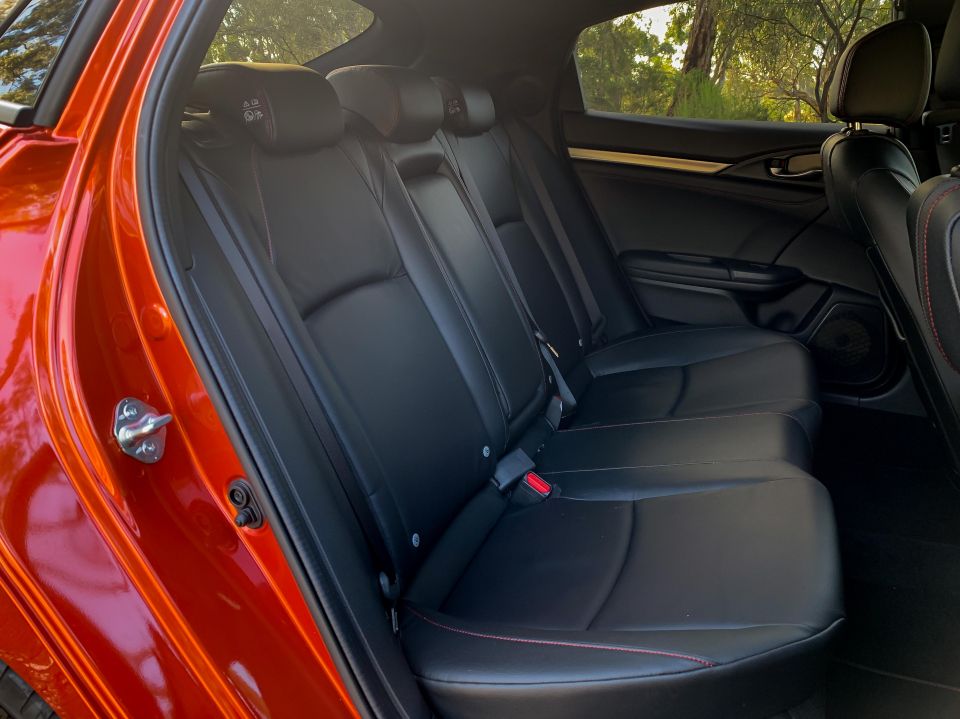
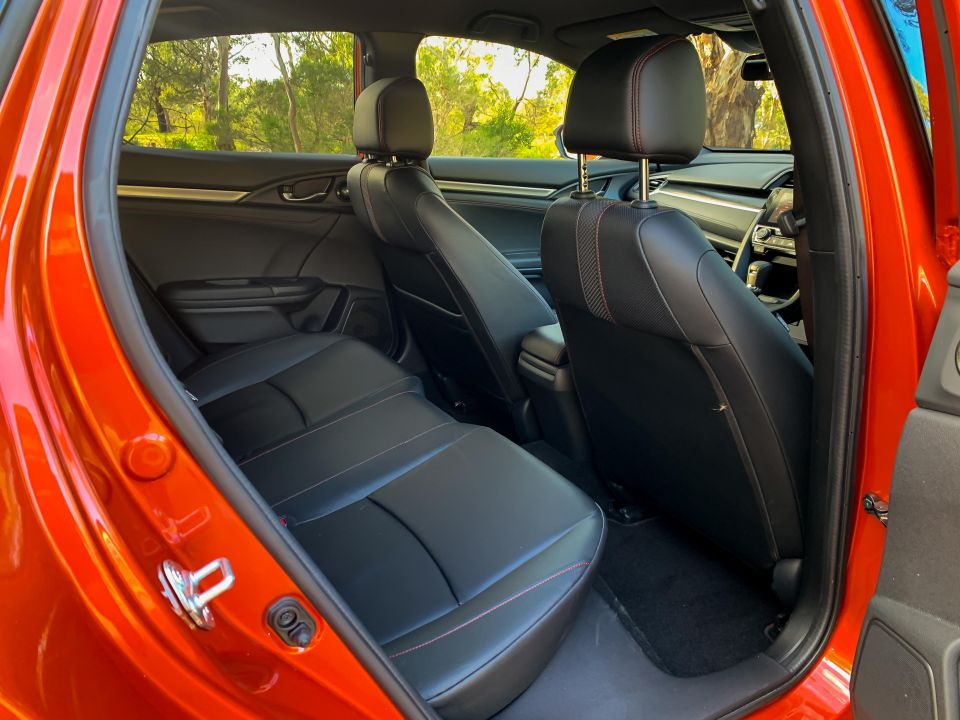
All the seats are nice and comfortable, though, and all the touch points feel good in the hand or are a nice place to rest your elbow.
Where the Civic really shows its talents are in the areas of space and practicality. There’s myriad storage options whether it be the massive centre console bin with switchable cupholders, the cubby under the centre stack to store your phone, or the secret shelf underneath that where (annoyingly), the USB, 12V and HDMI inputs are located.
What? HDMI? Yes you can plug in a laptop or device with the compatible output to turn the Civic’s 7.0-inch display into a monitor.
Further back there’s a good amount of space for two adults, three at a pinch. Leg- and headroom is very good for the class, though there’s no rear air vents which seems like a massive oversight given rear-seat accommodation has been prioritised in both hatch and sedan versions of the Honda Civic.
The soft-touch door tops don’t make it to the second row, and the array of storage options isn’t replicated either – limited to a map pocket on the passenger side, bottle holders in the doors and a fold-down centre armrest with cupholders.
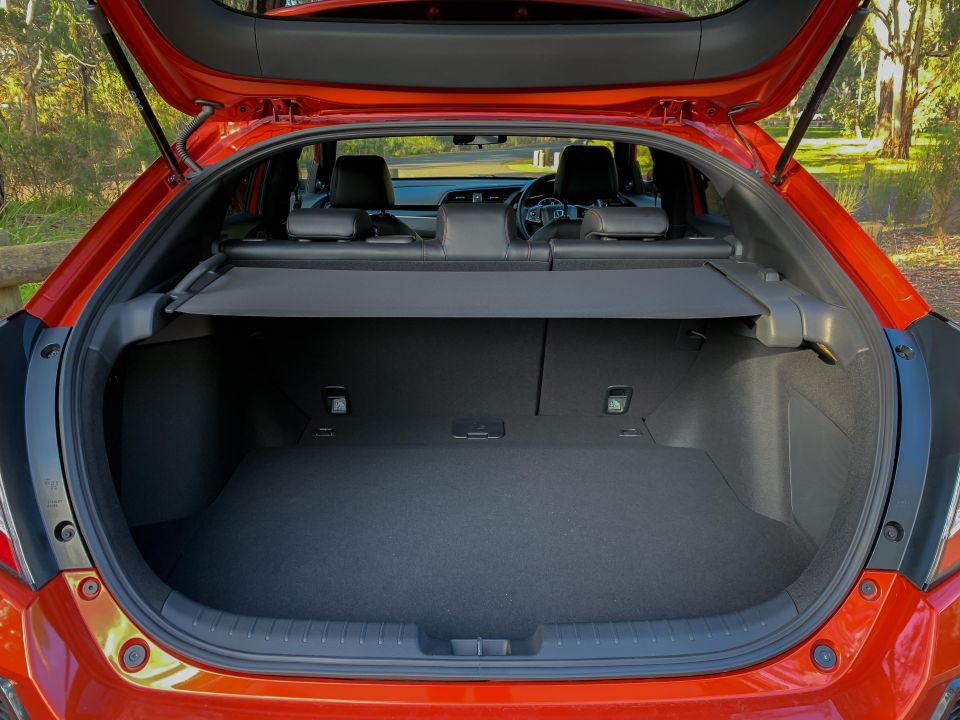

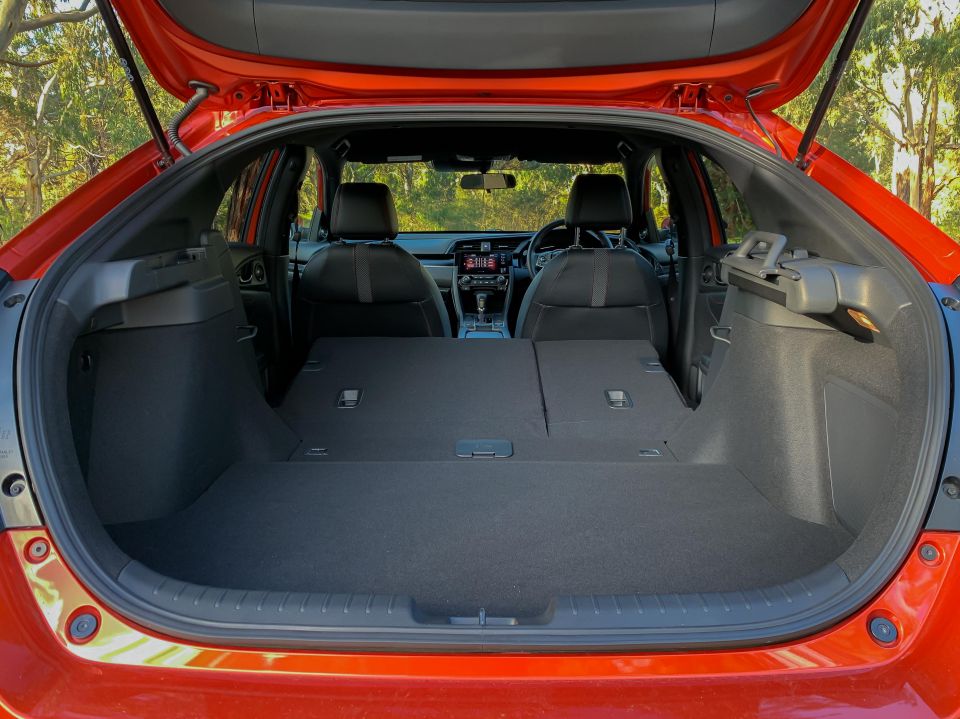
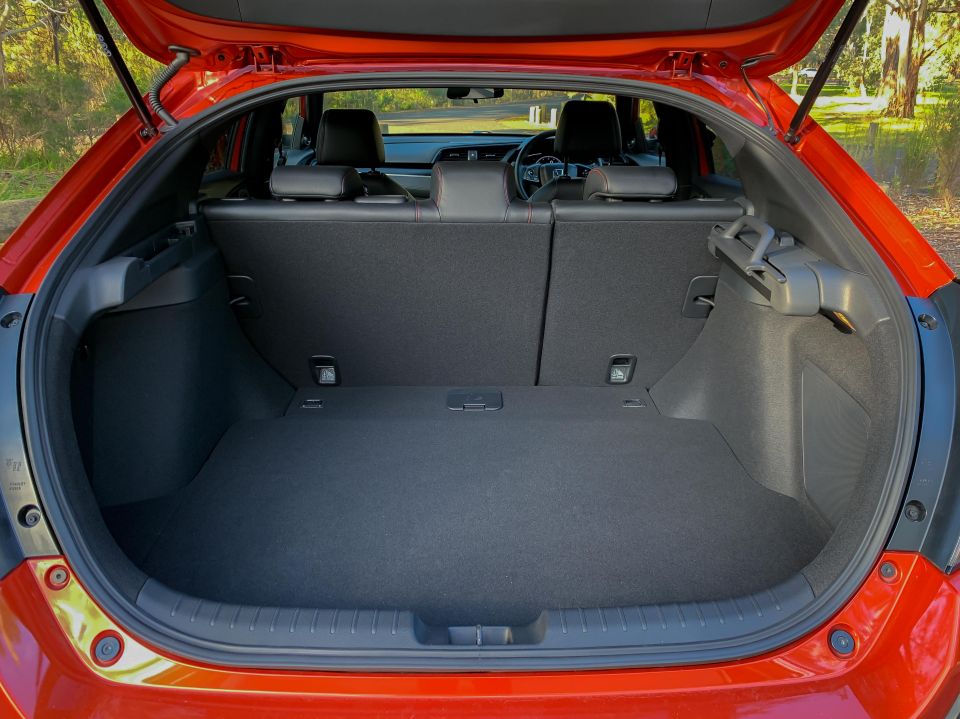
Further back again the Civic RS hatch sports a 340L boot (VDA) which certainly looks and feels bigger than the official rating.
Other Honda Civic hatch models claim 414L of boot space but the central exhaust of the RS cuts into the luggage area. Honda also doesn’t quote a maximum capacity with the rear seats folded, but trust me, it’s big enough.
Under the boot floor is a space saver spare wheel.
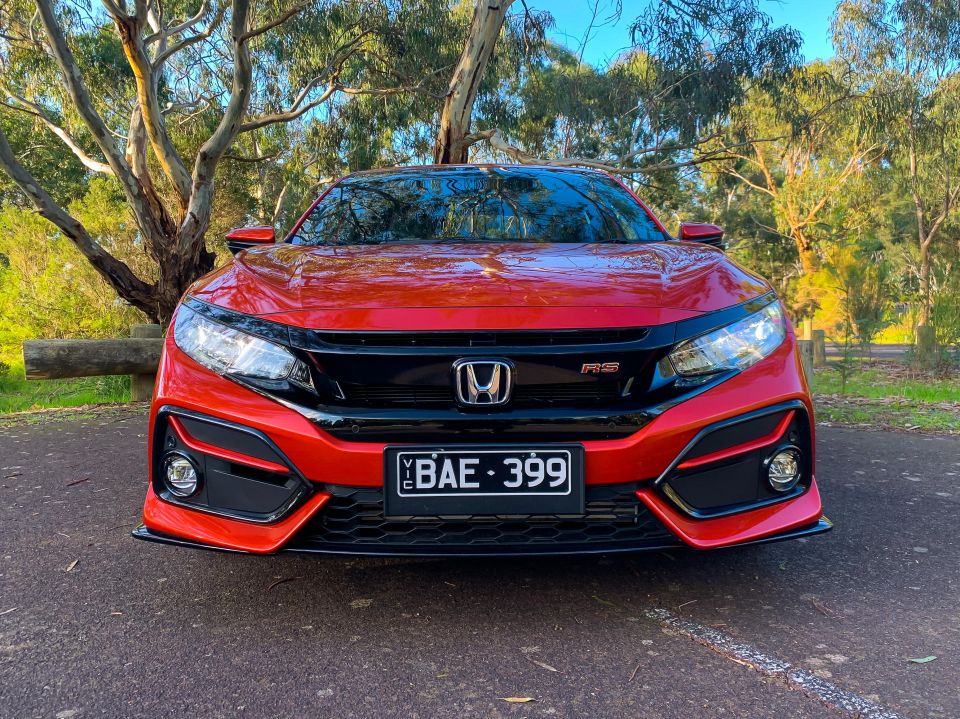
The Civic RS is powered by a 1.5-litre turbocharged four-cylinder petrol engine, shared with the VTi-L and VTi-LX grades.
Outputs are respectable, rated at 127kW of power at 5500rpm and 220Nm of torque between 1700 and 5500rpm.
Drive is sent to the front wheels exclusively via a continuously variable transmission, or CVT. Not exactly ‘sporty’.
Given the more athletic intentions it’s still a surprise Honda hasn’t given the Civic RS the more muscular tune from the CR-V crossover from the same basic engine – in the SUV it puts out 140kW and 240Nm.
It’s also a shame there’s no six-speed manual option like there is in most other markets, especially for the RS.
Gripes aside, fuel use is rated at 6.1L/100km on the combined cycle, and the Civic is happy running on regular 91 RON unleaded. There’s a 47L fuel tank fitted.
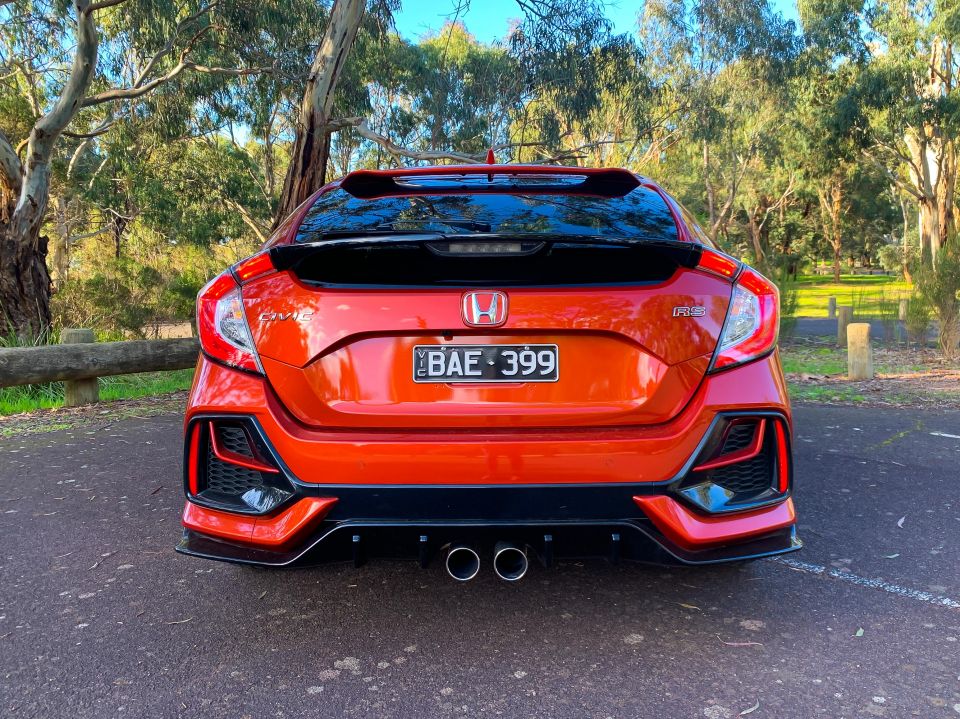
The Civic hasn’t changed much since this generation first arrived on our shores in 2016, so its core strengths and weaknesses remain.
Highlights from the get go are the sharp steering and agile dynamics. At all speeds the Civic is a delight to steer whether you’re navigating city streets or a winding back road.
It’s not quite as communicative or ‘sporty’ feeling as a Ford Focus – which is what I’d argue is the dynamic benchmark amongst mainstream hatchbacks – but the Civic certainly offers a fluid and refined experience through the tiller.
The ride is great, too. Even without a local suspension tuning program a-la the Hyundai i30 and Kia Cerato, the Civic does a great job at ironing out the array of lumps and bumps on Melbourne roads.
Despite the RS badging the Civic errs on the side of comfort, though the 18-inch alloys on this variant aren’t quite as cushy as the VTi-LX’s 17s let along the 16-inch rims on lesser models.
We found overall refinement at speed to be better than Honda Civics tested previously, too. Honda didn’t mention any revisions to noise, vibration, and harshness suppression for the 2020 update, so this probably isn’t down to increased sound deadening.
The RS does get model-specific Michelin Pilot Sport 4 tyres, which despite their more sporting bent seem quieter on all surfaces compared to the rubber on other Civic models we’ve tested.
Where the Honda Civic, particularly the RS, comes undone is the drivetrain. The 1.5-litre engine is a solid base, let down by the uninspiring and un-sporty CVT automatic.
Given the sharp dynamics and athletic looks, to have the engine droning and flaring revs on the move isn’t particularly engaging or enjoyable.
Honda’s CVT doesn’t really have artificial ‘steps’ that mimic gears in the same way you might find in a Toyota or a Subaru, so off the line you’ll feel a moment of hesitation before the engine flares up to about 3000rpm and stays there until you let off the throttle.
Don’t even bother using the steering-mounted paddles, either, as the Civic sounds like its slurring from gear-to-gear rather than shifting through them.
Under heavy load the 1.5-litre engine a bit intrusive as well, with a buzzy note that can get thrashy at the higher end.
It really is a shame because the Civic has some solid foundations and obvious dynamic talent. If only Honda offered a six-speed manual like overseas markets or a normal automatic/dual-clutch transmission, it’d transform the experience especially for the RS.
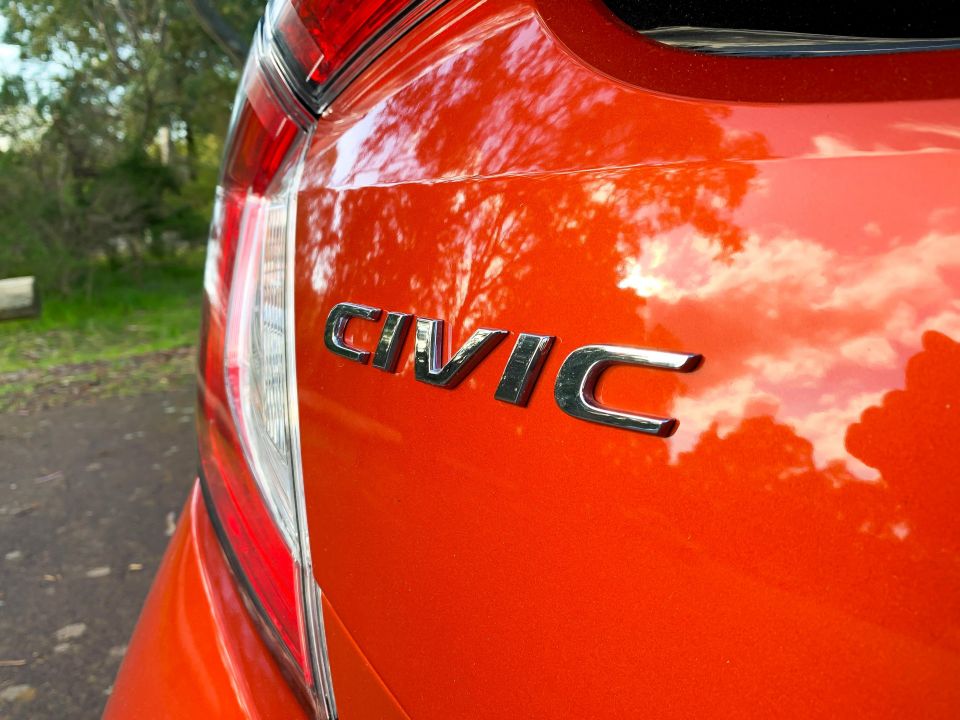
As with the wider Honda range, the Civic is covered by a five-year, unlimited-kilometre warranty with five years of capped-price servicing.
The Honda Tailored Servicing program covers up to five years or 100,000km, whichever comes first, with scheduled maintenance required every 12 months or 10,000km.
Each of the first five visits will cost you $297, totalling $1485. However, that’s not inclusive of what Honda calls ‘adaptive items’ such as dust and pollen filters ($45 every 24 months or 30,000km), brake fluid ($58 every 36 months, transmission fluid ($172 every 36 months or 40,000km) or the air cleaner element ($55 every 60,000km).
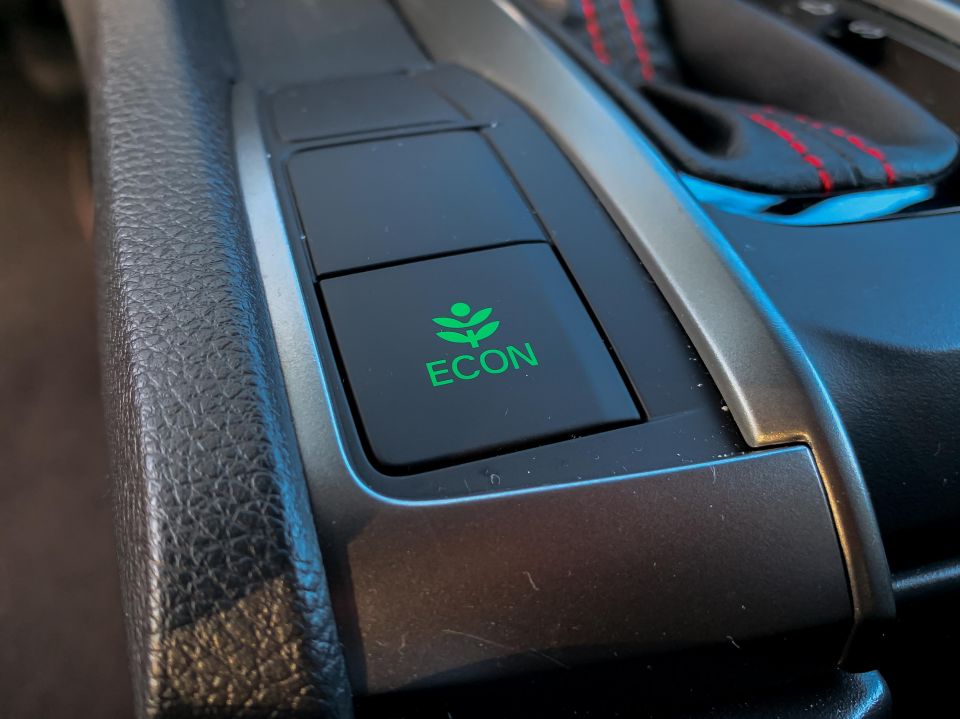
It’s a shame the service intervals aren’t longer like most rivals, with 15,000km fast becoming the norm. If you’re covering a lot of miles annually, it’s definitely something you need to consider.
As for fuel consumption, Honda claims an ambitious 6.1L/100km in mixed driving though we saw mid-eights during out week with the car, with a slight skew to urban commuting.
On the freeway the CVT drops revs to almost idle levels and the trip computer will indicate the Civic is sipping in the 5.0L realm, but the lack of stop/start technology and the rev-happy drivetrain mean fuel use can balloon in city driving.
With that in mind you can expect a little over 500km from the Honda Civic’s 47L tank, and it’ll happily run on 91 RON regular unleaded.
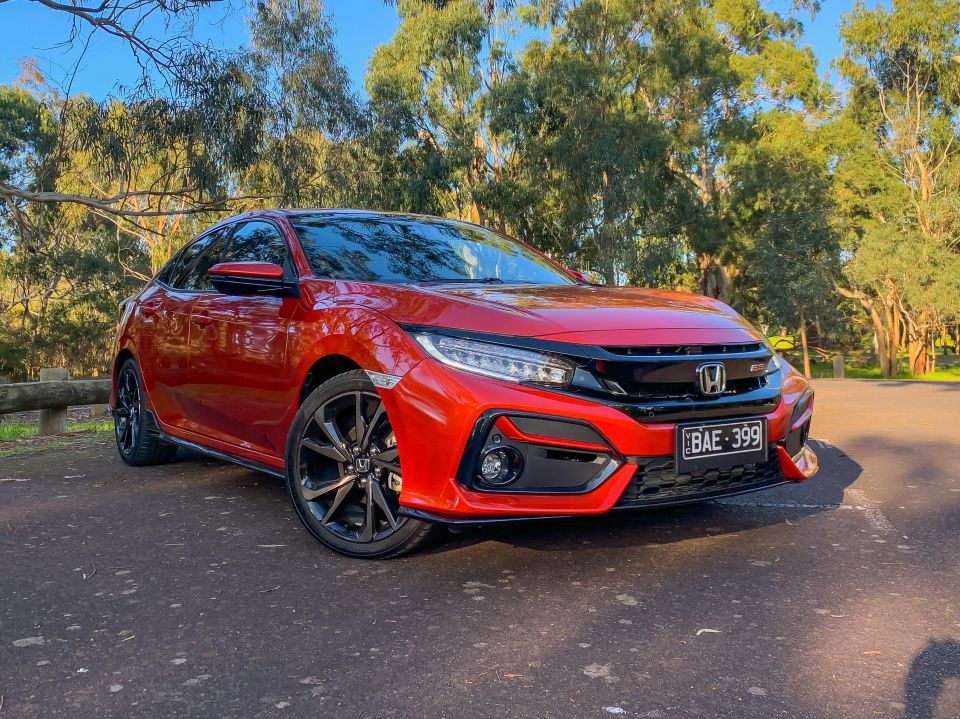
Where expert car reviews meet expert car buying – CarExpert gives you trusted advice, personalised service and real savings on your next new car.
Buy your new car without the stress. It's fast, simple and completely free.

Great service from Travis and team, second time I have used this business would not hesitate to recommend them to anyone
Craig C.
Purchased a Ford Ranger in Sunshine Coast, QLD
CarExpert helped Craig save $7,224 on his Ford Ranger, now let us save you on your next new car.
Get your BEST priceThe Honda Civic remains a comfortable and spacious not-so-small car that will do the job for most people.
With that said, the RS does little to really compete with other ‘warm’ hatches like the Hyundai i30 N Line or Kia Cerato GT largely down to the sole option of a CVT gearbox.
If a manual transmission was available, this car could well be one of the best driver’s cars at this end of the market, but alas Honda Australia persists with reserving a three-pedal gearbox for the flagship Type R. Shame.
Where expert car reviews meet expert car buying – CarExpert gives you trusted advice, personalised service and real savings on your next new car.
James is an automotive journalist based in Melbourne, Australia. Before joining CarExpert.com.au in 2020, James has worked at leading auto media outlets including Carsales and CarAdvice, as well as at Pulse agency for Ford Australia's communications team. In 2019 James made Mumbrella's 'Top 20 most prolific web authors in Australia' list after publishing 1,360 articles between March 1, 2018 and February 28, 2019 for CarAdvice. James is also an Ambassador for Drive Against Depression – an Australian charity whose mission is to support mental wellness through the freedom of driving and a shared love of cars.


Max Davies
5 Days Ago


Max Davies
4 Days Ago
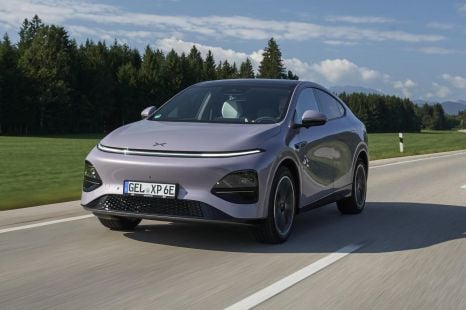

Neil Briscoe
3 Days Ago
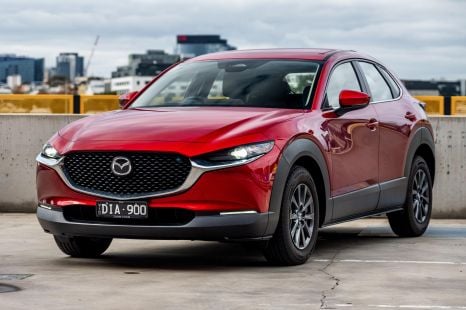

Max Davies
2 Days Ago
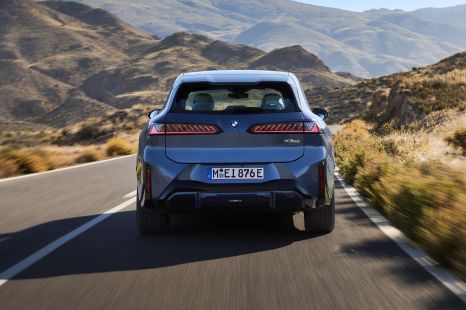

Alborz Fallah
20 Hours Ago
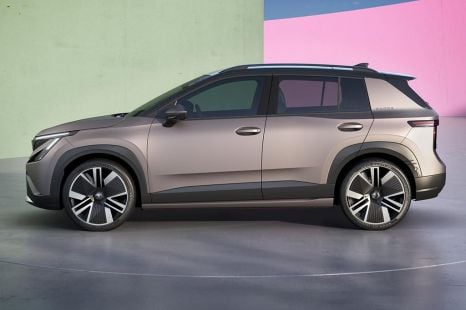

Damion Smy
20 Hours Ago